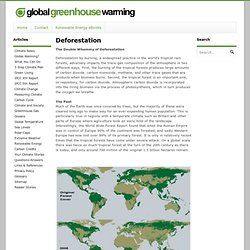

China's One-Child Policy Turns 33 as Forced Abortions, Female Infanticides Continue. By Steven Ertelt | Washington, DC | LifeNews.com | 9/25/13 12:47 PM Today, China will mark 33 years of the one-child family planning policy that has resulted in massive human rights abuses, including forced abortions and coercive sterilizations.

Started in 1980, the policy, which prohibits most Chinese couples form having more than one baby and limits rural residents to two, has resulted in severe human rights abuses. Family planning officials frequently jail couples who refuse to comply, sentence them to house arrest or labor camps, revoke jobs or governmental support, use physical harassment or violence and often target other family members. Congressman Chris Smith of New Jersey, one of the leading pro-life and human rights advocates in Congress, previously marked the September 25 anniversary. “On that date in 1980 the Central Committee of the Chinese Communist Party sent an open letter to party members setting forth its plan to embark on a national one-child policy,” Smith said.
The economics of China's one-child policy. Rumblings in China's state media suggest that Beijing is considering a move to relax its deeply unpopular one-child policy, a change that could significantly alter demographic trends in the world's second largest economy.

Since its introduction in the late 1970s to control China's rapid population growth, policymakers have carved out some exceptions to the rule, including a provision that allows rural residents to have a second child if the first was a girl. But for hundreds of millions of Chinese, the one-child policy remains a powerful force in their daily lives. Couples who violate the rule face heavy financial penalties, and the deterrent has proved strong enough to drive fertility rates lower in China. The slowdown in birth rates is especially pronounced in major cities like Shanghai.
Efforts to enforce the policy have also spawned a huge bureaucracy, with officials from the family planning agency stationed in towns and villages across the country. The role of government and companies in deforestation. Illegal timber uncovered during construction of the new Home Office buildings in 2003 © Greenpeace/Cobbing Despite repeated promises and claims of green policies, government and companies have so far failed to seriously address the problem of deforestation.

Destructive and illegal logging is laying waste to huge areas of forest, making a massive contribution towards climate change and is having a devastating effect on forest-dwelling people and wildlife. Poorly enforced policies Our own government in particular should hang its head in shame: it claims that it is working to protect forests elsewhere in the world, but its efforts at preventing dodgy timber from entering the UK have been rather poor. In 2000, the government introduced a policy requiring all departments to "actively seek" to buy timber from legal and well-managed sources. One part of the problem is CPET itself. The need for legislation Corporate greed. Deforestation.
The Double Whammy of Deforestation Deforestation by burning, a widespread practice in the world’s tropical rain forests, adversely impacts the trace-gas composition of the atmosphere in two different ways.

First, the burning of the tropical forests produces large amounts of carbon dioxide, carbon monoxide, methane, and other trace gases that are products when biomass burns. Second, the tropical forest is an important sink, or repository, for carbon dioxide. Atmospheric carbon dioxide is incorporated into the living biomass via the process of photosynthesis, which in turn produces the oxygen we breathe. The Past Much of the Earth was once covered by trees, but the majority of these were cleared long ago to make way for an ever expanding human population. People have been living in and around tropical rain forests for tens of thousands of years, taking what they needed from the wealth of natural resources available without compromising their environment.